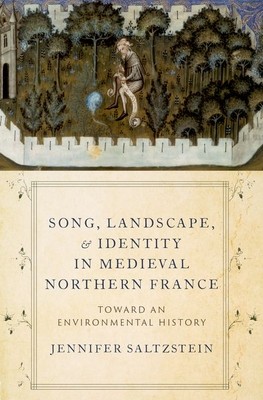
- We will send in 10–14 business days.
- Author: Jennifer Saltzstein
- Publisher: Oxford University Press, USA
- ISBN-10: 0197547788
- ISBN-13: 9780197547786
- Format: 15.8 x 23.5 x 1.7 cm, softcover
- Language: English
- SAVE -10% with code: EXTRA
Song, Landscape, and Identity in Medieval Northern France (e-book) (used book) | bookbook.eu
Reviews
Description
Song, Landscape, and Identity in Medieval Northern France offers a new perspective on how medieval song expressed relationships between people and their environments. Informed by environmental history and harnessing musicological and ecocritical approaches, author Jennifer Saltzstein draws connections between the nature imagery that pervades songs written by the trouvères of northern France to the physical terrain and climate of the lands on which their authors lived. In doing so, she analyzes the different ways in which composers' lived environments related to their songs and categorizes their use of nature imagery as realistic, aspirational, or nostalgic. Demonstrating a cycle of mutual impact between nature and culture, Saltzstein argues that trouvère songs influenced the ways particular groups of medieval people defined their identities, encouraging them to view themselves as belonging to specific landscapes. The book offers close readings of love songs, pastourelles, motets, and rondets from the likes of Gace Brulé, Adam de la Halle, Guillaume de Machaut, and many others. Saltzstein shows how their music-text relationships illuminate the ways in which song helped to foster identities tied to specific landscapes among the knightly classes, the clergy, aristocratic women, and peasants. By connecting social types to topographies, trouvère songs and the manuscripts in which they were preserved presented models of identity for later generations of songwriters, performers, listeners, patrons, and readers to emulate, thereby projecting into the future specific ways of being on the land. Written in the long thirteenth century during the last major era of climate change, trouvère songs, as Saltzstein demonstrates, shape our understanding of how identity formation has rested on relationships between nature, culture, and change.EXTRA 10 % discount with code: EXTRA
The promotion ends in 19d.13:44:25
The discount code is valid when purchasing from 10 €. Discounts do not stack.
- Author: Jennifer Saltzstein
- Publisher: Oxford University Press, USA
- ISBN-10: 0197547788
- ISBN-13: 9780197547786
- Format: 15.8 x 23.5 x 1.7 cm, softcover
- Language: English English


Reviews